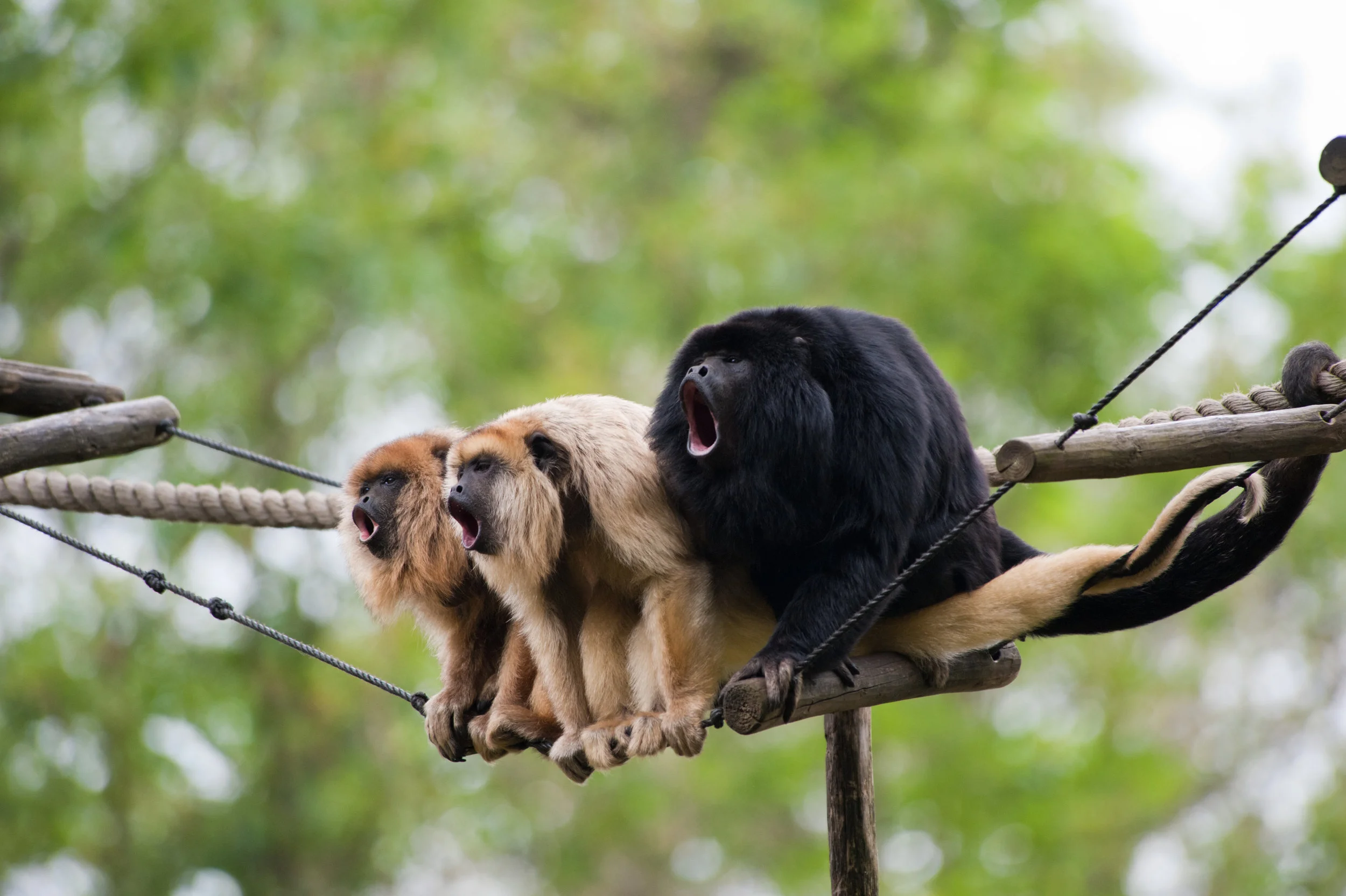Howler Monkey
"A nice day for howling" by Borislav Mitkov (Digital)
“We need to protect and cherish what we have. These furry balls are among the most amazing creatures on our Planet. How not to love them?”
Your purchase is helping Expedition Art and Saving Species purchase land in Sumatra! Learn more about the project.
Habitat
Howler monkeys are found solely in the rainforests of Central and South America. They are arboreal, spending nearly all of their lives in the trees.
Family Life
Howler monkeys live in groups called troops, containing anywhere from six to 20 individuals. The troops are dynamic and contain a variety of females, males and juveniles, though there is an established leader in each troop. Both genders leave their natal troop when they reach maturity, so they do not spend their lives with their family. Most of their daily life is spent grooming one another and resting. The howler monkey is diurnal and as their name suggests, have very prolific vocalizations.
Lifespan
The Howler monkey has a life expectancy of 15-20 years.
Hunting Habits/Diet
Howler monkeys are most frequently vegetarian. Their preferred food sources are leaves, fruit, flowers and nuts but they have also been known to eat eggs from bird nests. Howler monkeys obtain their water via their food sources. During dry spells, they are occasionally forced to look for water on the ground.
Population
There are a variety of different howler monkey subspecies and each presents its own unique IUCN classification. The most jeopardized subspecies are the Yucatán black howler monkey and the Maranhão red-handed howler monkey, both of which are considered Endangered with continually decreasing populations.
Fun Fact
Howler monkeys are the loudest mammal in the world. They developed an evolutionary mechanism in their throat that allows them to vocalize with a resonance that can be heard for miles. Their calls are territorial but can also act as a type of primitive “Marco! Polo”, with one group calling and another answering.
Why are they Endangered?
Howler monkeys are not subject to frequent predation from other animals. The most substantial threat facing their survival is habitat destruction in the form of deforestation. As they need acres of forest in order to survive, once these forests are gone, the howlers will be as well. They are also hunted for their meat and fur, as well as for sport.
Status
Some are endangered.


